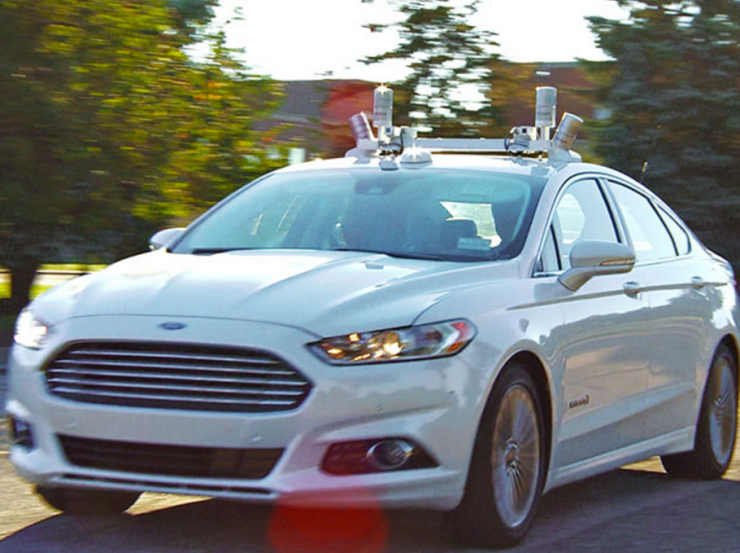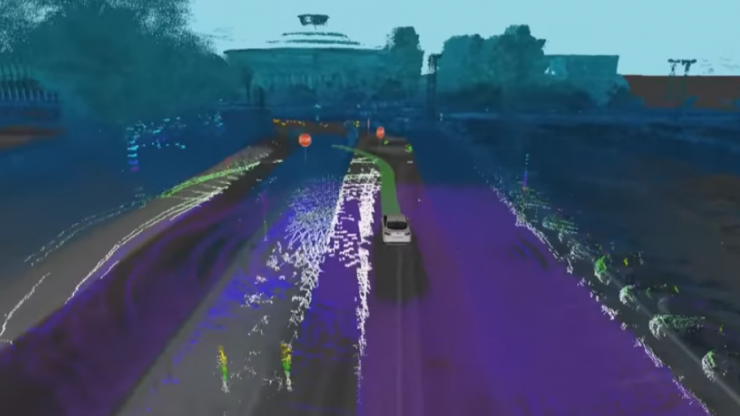
Editor's note: This article first published in IEEE, author Philip E. Ross, Lei Feng network (search "Lei Feng network" public number attention) compiler, without permission may not be reproduced.
During the test drive of the Ford driverless car, I only encountered a minor problem. The vehicle was on the way to the headquarters of the Ford Motor Company in Dearborn, Michigan. The car did not know why it was suddenly braked. Then it quickly It started again.
It's a little bit anomaly, but it doesn't hurt.
At this press conference, a reporter said that the driverless car he was riding in was scared by a fence. But in terms of my ride experience, everything went smoothly from the beginning to the end. I just set the end point at the very beginning, and the rest of the turn, lane change, parking, and start-up were all done by driverless cars.
Ford plans to launch a driverless car taxi service in Dearborn in 2018. By then, the performance of some sensors will also increase. For example, the current price of the four sets of laser radars with price of 8,000 US dollars is only 80 meters, and the detection distance of the new Lidar to replace them is doubled. By 2021, Ford plans to launch a commercial driverless taxi service, and the laser radar should be smaller, better, and cheaper by then.
Randal Visintainer, head of Ford’s unmanned vehicle project, said: “We use a modular design, so we do not have to delay delivery of new hardware. Although there are many suppliers who are talking about producing ultra-low-cost laser radar chips, I haven’t See a product. "
The position of the laser radar on the roof of Ford's driverless car is very important, and the two outermost lidars are tilted to obtain the vision on both sides of the car. If, like Google's driverless cars, only one lidar is installed on the roof, the shadow of the car will form a blind spot. The other two lidars of the Ford driverless car are arranged vertically to monitor the front and rear of the car.
Ford’s driverless cars that the reporters rode on this time were transformed by Ford Focus hybrids. They use a map with an accuracy of two centimeters, and they use real-time data collected by lidars, color cameras behind windshields, cameras pointing in other directions, multiple short-range and long-range radars to compare with this map. Correct. These vehicles are even equipped with ultrasonic sensors to assist parking and other very close tasks.
The image below is the world in the eyes of driverless cars. The dark color represents the saved mapping data, and the bright color represents the real-time data collected by the car sensor (full video point here).

However, the Ford driverless car does not use a real-time GPS sensor, because this sensor is very unreliable in many areas of the building.
The only performance in our test ride was a Ford employee acting as a pedestrian: He was crossing the road while playing with a mobile phone, and the driverless car stopped in time. Then, the real people began to cross the road and the car responded correctly. Sometimes Ford's driverless car will be cautious to some extent: After the pedestrian crosses the road and takes a dozen steps, the car starts.
The key to Ford's driverless car is that it is designed to fully drive the car, a major step forward compared to today's advanced driver assistance technology. However, this does not mean that Ford has not taken a hard look at transitional technology.
Randal Visintainer said: “We have two top-down and bottom-up design philosophies. Improving driverless technology is “top down†and let the driver assistance system work from the bottom down "The question is, how long can we go forward with driverless technology and when will these two methods meet?"
Google has made a "top-down" approach to its reputation, saying that any technology that is not fully automated is deceptive to the driver with a false sense of security . This is the view held by many people in the industry when Tesla Motors took a fatal accident in May this year.
The absence of a driver equals the elimination of the last safety net, which means that the car needs additional safety-redundant designs to handle emergency situations.
Randal Visintainer said that combining these two strategies and combining various systems to achieve efficient production and long-term use is the core competitiveness of Ford. Ford is better at this point than non-automakers like Google, Apple and Uber.
Bill Ford, Ford Motor Company’s chief executive and former eBay board member, recently delivered a speech: “We know how to integrate all of these technologies into a car. Non-automotive manufacturers may not have this capability. People have been saying, We will be a provider of cheap assembly services for other company technologies. This situation has changed. We have also developed many technologies ourselves and integrated them into cars to make them.â€
Auto manufacturers and non-auto manufacturers are competing, not only in technology but also in public awareness. This is why Ford and Uber invited journalists to try driving a driverless car.
Although Uber's driverless cars use different driverless technologies, the cars are still Ford's. Uber will invest these vehicles in trials of commercial driverless taxi services, but that does not mean that Uber has taken a big lead over Ford, let alone Google. Don't forget that Uber's driverless cars are still under the control of professional drivers.
Recommended reading:
Depth | The person who is experiencing it says: How does Uber experience after driving on the road?
5-minute video tells you why people drive better than people |
Paddy Rice Dryer,Rice Grain Dryer,Portable Grain Dryer,Mobile Paddy Dryer
HuangShi Stee Metal Material Technology Exploitation Co.,Ltd , https://www.wosenstechnology.com